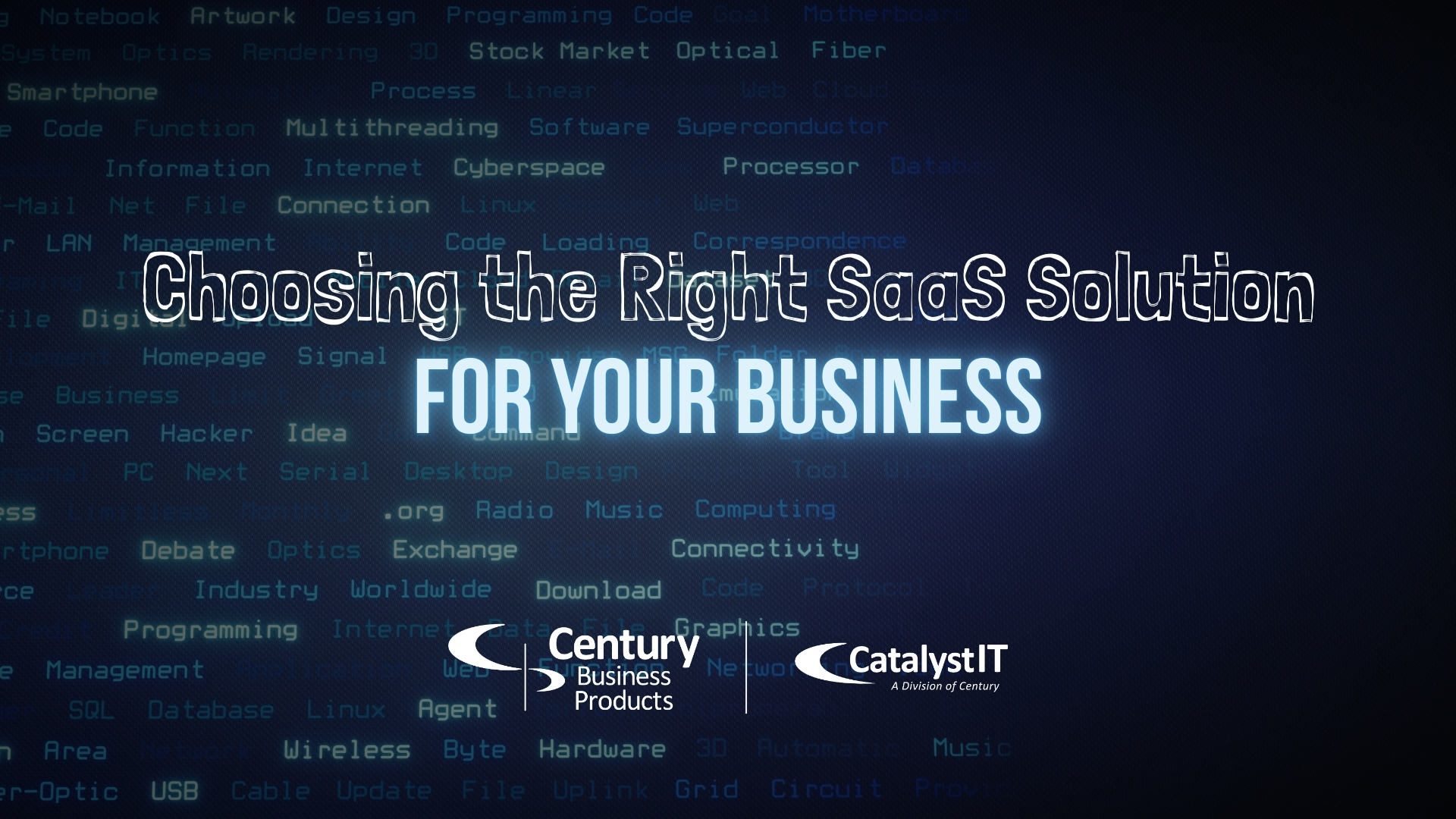Choosing the Right SaaS Solution for Your Business

Starbucks or Scooter’s? Taco Bell or Taco John’s? Verizon or AT&T? Every day, you’re faced with choices that require decisions. “What do you want for dinner?” may be the most difficult question asked every day. Choosing the right Software-as-a-Service (SaaS) for your business can be just as difficult, probably more so.
The allure of SaaS is undeniable: flexibility, lower upfront costs, and user-friendly interfaces have made cloud-based applications a cornerstone of the modern workplace. From streamlining communication and managing customer relationships to tracking projects and beyond, SaaS offers a wealth of tools to enhance efficiency and drive growth.
However, with a vast and ever-expanding universe of SaaS options available, selecting the right applications for your unique business needs is critical. Simply adopting every shiny new tool can lead to a fragmented workflow, data silos, and ultimately, hinder productivity rather than help it. A thoughtful and strategic approach is essential to harness the true potential of SaaS.
Don’t make rash decisions when it comes to choices like: Dropbox or OneDrive, Salesforce or HubSpot, Shopify or Squarespace. Review these considerations to help guide you in your decisions.
Key Considerations for Choosing the Right SaaS Applications:
Before integrating any new cloud-based service into your business, take a step back and carefully evaluate several crucial factors:
- Alignment with Business Goals:
- The most important question to ask is: how will this SaaS application help us achieve our strategic objectives? Does it address a specific pain point, improve a key process, or unlock new opportunities for growth?
- Integration Capabilities:
- Will the new SaaS seamlessly integrate with your existing IT infrastructure and other critical applications? Poor integration can lead to data inconsistencies and inefficient workflows. Look for robust API capabilities and compatibility with your current systems.
- Even the most powerful SaaS tool is useless if your team doesn’t adopt it. Prioritize applications with intuitive interfaces and comprehensive training resources to ensure smooth onboarding and widespread usage.
- Data Security, Compliance, Vendor Reputation:
- Entrusting your data to a third-party requires careful consideration of their security protocols and compliance certifications. Ensure the vendor adheres to stringent security standards and relevant data protection regulations for your industry and location.
- What is the vendor’s reputation? Research the vendor’s track record, customer reviews, and overall stability. A reputable provider with a history of reliable service and strong support is a crucial partner for your business.
- Scalability and Performance:
- As your business evolves, your chosen SaaS applications should be able to scale accordingly without impacting performance or incurring exorbitant costs. Consider the vendor’s growth plans and their ability to handle increasing data volumes and user numbers.
- Cost, Pricing Model, and Support/Service:
- Carefully analyze the pricing structure. Be aware of potential hidden costs, per-user fees, storage limitations, and additional charges for essential features. Choose a model that aligns with your budget and anticipated usage.
- Understand the vendor’s service level agreements (SLAs). These outline uptime guarantees, support responsiveness, and their commitment to keeping your services running smoothly.
Making Informed Choices in the Cloud:
Selecting the right SaaS application is an investment in your business’s future. By carefully considering these key factors and aligning your choices with your overarching goals, you can build a powerful and efficient technology stack that empowers your team and drives success.
Seeking guidance in navigating the SaaS landscape? Our experienced team can help you assess your business needs and identify the cloud-based solutions that will best support your growth and efficiency. Contact us today for a consultation and let us help you build a smarter, more connected business.


